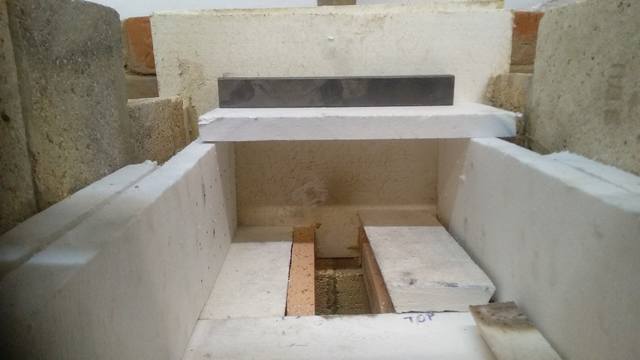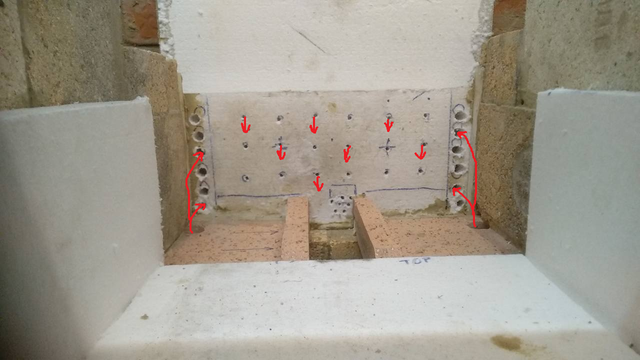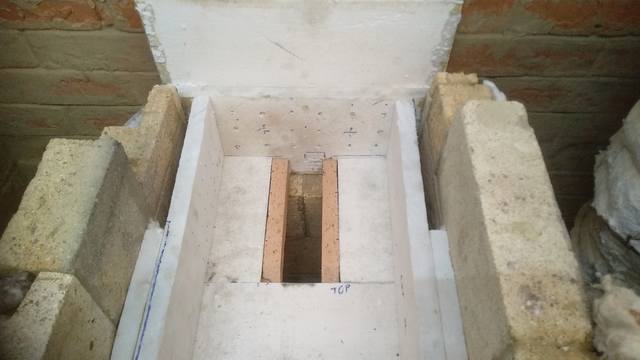|
|
Post by hof on Dec 24, 2021 7:13:20 GMT -8
|
|
|
|
Post by Vortex on Dec 24, 2021 13:18:26 GMT -8
Looking good. I wondered what that grove in the red bricks was for, never seen a lintel done like that before. What is the brown stuff around the threaded bar, silicone?
|
|
|
|
Post by Dan (Upstate NY, USA) on Dec 24, 2021 19:26:25 GMT -8
Stove porn, I love it...
|
|
|
|
Post by hof on Dec 25, 2021 13:42:43 GMT -8
|
|
|
|
Post by Vortex on Dec 25, 2021 15:31:24 GMT -8
|
|
|
|
Post by hof on Dec 28, 2021 8:57:06 GMT -8
|
|
|
|
Post by Vortex on Dec 28, 2021 11:44:51 GMT -8
Nice. I didn't realise you were doing secondary air in the afterburner, is that as well as at the top of the firebox walls? The best position I've found for the secondary air in the afterburner is on the lower side walls 19mm to 38mm up from the bottom (21mm to 43mm on your 160mm system). This is because the vortex is pushing against most of the upper surfaces, and only where it is pulling away does it allow the air through. When I tried it with holes all up the sides, after the burn was over you could see smoke residue inside all the higher holes. In the drawing below you can see the double vortex and the 4 small reverse vortices in the corners. A & B are the best places I have found so far. Above them the vortex is pushing against all the surfaces. C & D look like they should be good as well but I haven't tried them yet. E & F would be against the spin of the vortex. The whole of the back wall is also OK but it does seem to push the vortex forward a bit if there is too much there.  |
|
|
|
Post by hof on Dec 28, 2021 13:02:26 GMT -8
The best position I've found for the secondary air in the afterburner is on the lower side walls 19mm to 38mm up from the bottom (21mm to 43mm on your 160mm system).. In the drawing below you can see the double vortex and the 4 small reverse vortices in the corners. A & B are the best places I have found so far. Above them the vortex is pushing against all the surfaces. C & D look like they should be good as well but I haven't tried them yet. E & F would be against the spin of the vortex. The whole of the back wall is also OK but it does seem to push the vortex forward a bit if there is too much there. Thank you very much. AbCD areas will be used. |
|
|
|
Post by hof on Dec 29, 2021 3:36:15 GMT -8


Secondary air asks for being heated on the top chamber... |
|
|
|
Post by hof on Dec 29, 2021 9:03:42 GMT -8
|
|
|
|
Post by Vortex on Dec 29, 2021 11:59:23 GMT -8
That's looking great. You'll probably want more than 6 holes on the sides, I have 3 rows of 9 holes on each lower side, you can just about see them in the picture below. You need 10% CSA secondary air, but as it has to be through a lot of small holes there is high surface friction, so you can oversize it a bit to compensate. www.vftshop.com/images/others/Stove/2ndairafterburn3.jpg |
|
|
|
Post by Jura on Dec 29, 2021 13:44:40 GMT -8
I can not find out where is the rear afterburner wall provided air supossed to come from. |
|
|
|
Post by hof on Dec 29, 2021 22:42:23 GMT -8
I can not find out where is the rear afterburner wall provided air supossed to come from.   |
|
fuegos
Full Member
   not out of the woods yet
not out of the woods yet
Posts: 177
|
Post by fuegos on Dec 30, 2021 1:58:38 GMT -8
Thanks for taking time to post all the updates and photos Hof, this is a great contribution to our community - and of course Vortex & others for all the initial work & current help in your build .For me visual interpretation is the best way to understand what's going on.I can't wait for the next post !
|
|
|
|
Post by Jura on Dec 30, 2021 5:57:38 GMT -8
Thanks for sketching. I was not descriptive enough. I could see it enters via those bigger holes end enters the afterburner via the small ones. But It looks as if it is blocked by another piece of CFB behind which can not be removed as then the secondary air would be sucked into the stove bell. Btw. Respect for the build and sharing attitude |
|